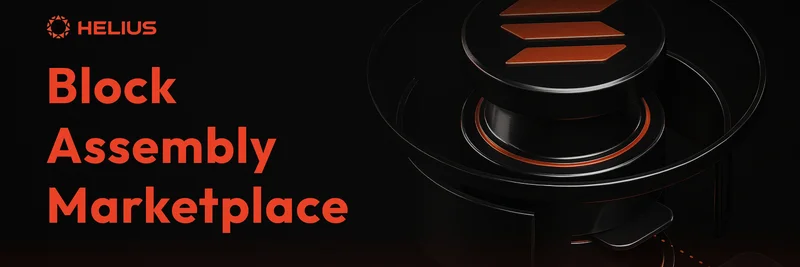Hey there, crypto enthusiasts! If you’ve been keeping an eye on the Solana blockchain, you’re in for a treat. On August 1, 2025, Mert from helius.dev dropped a bombshell on X about a game-changing update: the Block Assembly Marketplace (BAM) by Jito. This isn’t just another upgrade—it’s being hailed as the "biggest change in Solana history." Let’s break it down and see why this could shake up the crypto world!
What’s BAM All About?
Imagine a system where block-building (the process of ordering transactions on a blockchain) becomes more transparent, private, and customizable. That’s BAM in a nutshell. Jito, which already powers 87% of Solana’s stake through its validator client, is rolling out this new infrastructure. BAM introduces a decentralized network of nodes that handle transaction ordering, while validators focus on executing them. This separation is a big deal, inspired by Ethereum’s Proposer-Builder Separation (PBS), but tailored for Solana’s high-speed needs.
The coolest part? BAM runs inside Trusted Execution Environments (TEEs), which keep transactions encrypted until they’re executed. This slashes the risk of shady practices like "sandwiching" (when bots manipulate trades for profit). Mert’s tweet highlights how BAM eliminates onchain clobs (central limit order books), app-controlled execution, and introduces verifiable ordering—making everything fairer and more open-source.
Why This Matters for Solana
Solana’s known for its lightning-fast transactions, but it’s had its share of issues—like opaque validator behavior and MEV (Miner Extractable Value) exploitation. BAM tackles these head-on. Here’s what it brings to the table:
- No More Sandwiching: Bots can’t frontrun your trades anymore thanks to TEE privacy.
- Verifiable Ordering: You can audit how transactions are sequenced, boosting trust.
- Decentralized Power: With plugins, developers can create custom rules (like prioritizing cancels in order books), giving apps more control.
- Open Source: Jito plans to make BAM transparent, a huge step from its current closed-source block engine.
This could make Solana a hotspot for decentralized finance (DeFi) and trading platforms, especially for perpetual futures and central limit order books. The linked article from helius.dev dives deeper into how BAM works, and it’s worth a read if you’re into the technical side!
The Buzz on X
Mert’s post sparked a flurry of excitement. Streamflow gave it a thumbs-up with “5 BAM’s from intern 💥,” while Crypto Zen suggested a deep dive into Helius next. Others like Raffael_AI and kkomysh are hyped about the shift to onchain CLOBs and decentralized execution. It’s clear the crypto community sees this as a potential game-changer for Solana’s ecosystem.
Risks and What’s Next
No innovation is without risks. BAM relies on TEEs, which depend on hardware like AMD processors. If a vulnerability pops up (like past Intel SGX issues), it could disrupt the network. Plus, the phased rollout starts with a permissioned group, raising questions about centralization. But with Jito’s plan to open-source BAM and involve the community, there’s hope for a decentralized future.
The rollout kicks off with partners like Helius, SOL Strategies, and others, aiming for broad adoption by 2025’s end. If successful, BAM could keep more activity on Solana’s mainnet, reducing the need for rollups or sidechains.
Why You Should Care
Whether you’re a trader, developer, or just a meme coin fan, BAM’s impact could ripple through. Tighter spreads, better liquidity, and less MEV exploitation mean a healthier market—perfect for those wild meme token pumps! At Meme Insider, we’re tracking how this tech evolution might boost projects on Solana. Stay tuned for more updates as BAM unfolds!
What do you think about this Solana revolution? Drop your thoughts in the comments, and let’s chat about how BAM might shape the future of crypto!


